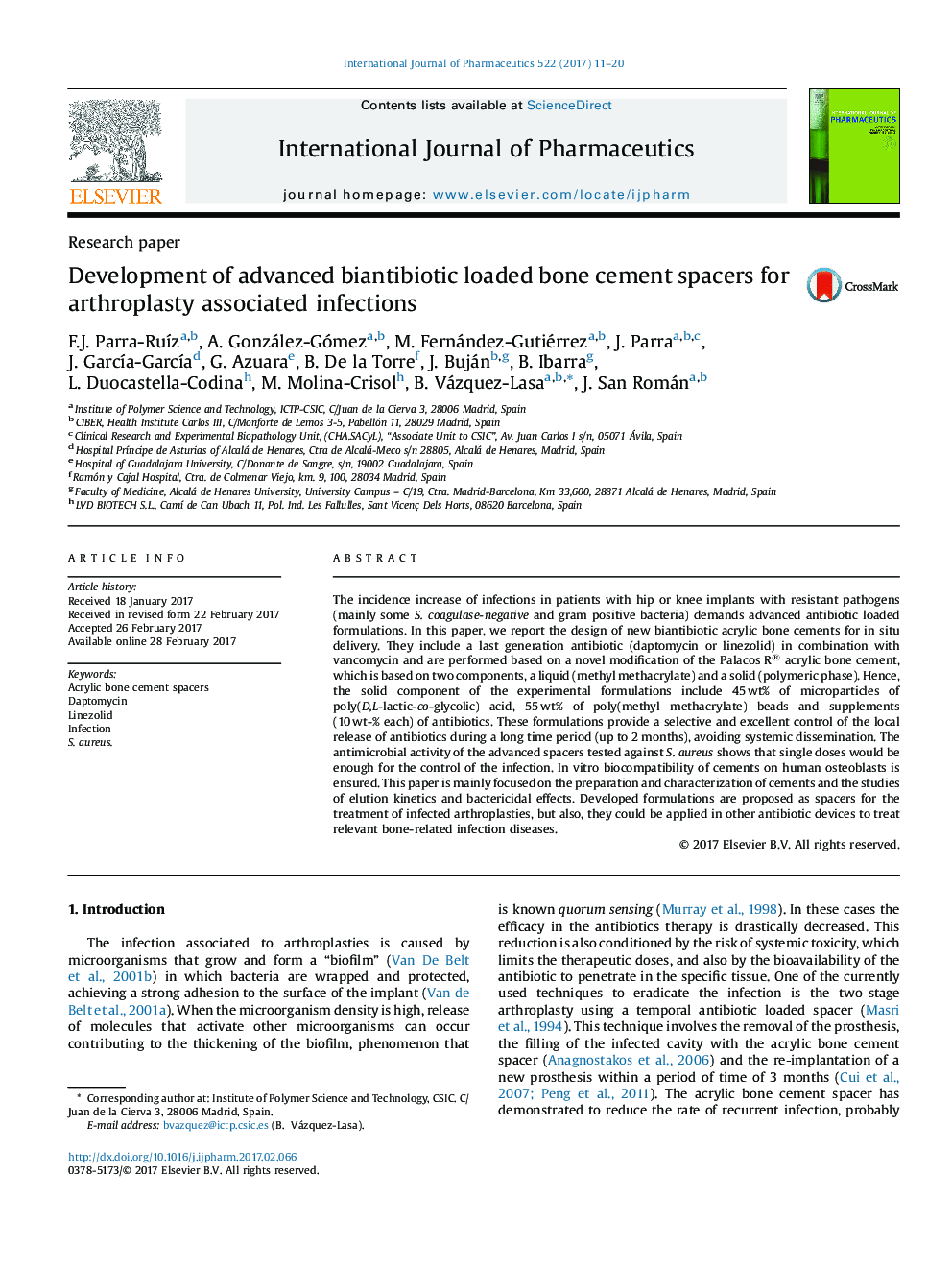| Article ID | Journal | Published Year | Pages | File Type |
|---|---|---|---|---|
| 5550553 | International Journal of Pharmaceutics | 2017 | 10 Pages |
The incidence increase of infections in patients with hip or knee implants with resistant pathogens (mainly some S. coagulase-negative and gram positive bacteria) demands advanced antibiotic loaded formulations. In this paper, we report the design of new biantibiotic acrylic bone cements for in situ delivery. They include a last generation antibiotic (daptomycin or linezolid) in combination with vancomycin and are performed based on a novel modification of the Palacos R® acrylic bone cement, which is based on two components, a liquid (methyl methacrylate) and a solid (polymeric phase). Hence, the solid component of the experimental formulations include 45Â wt% of microparticles of poly(D,L-lactic-co-glycolic) acid, 55Â wt% of poly(methyl methacrylate) beads and supplements (10Â wt-% each) of antibiotics. These formulations provide a selective and excellent control of the local release of antibiotics during a long time period (up to 2 months), avoiding systemic dissemination. The antimicrobial activity of the advanced spacers tested against S. aureus shows that single doses would be enough for the control of the infection. In vitro biocompatibility of cements on human osteoblasts is ensured. This paper is mainly focused on the preparation and characterization of cements and the studies of elution kinetics and bactericidal effects. Developed formulations are proposed as spacers for the treatment of infected arthroplasties, but also, they could be applied in other antibiotic devices to treat relevant bone-related infection diseases.
Graphical abstractDownload high-res image (96KB)Download full-size image
